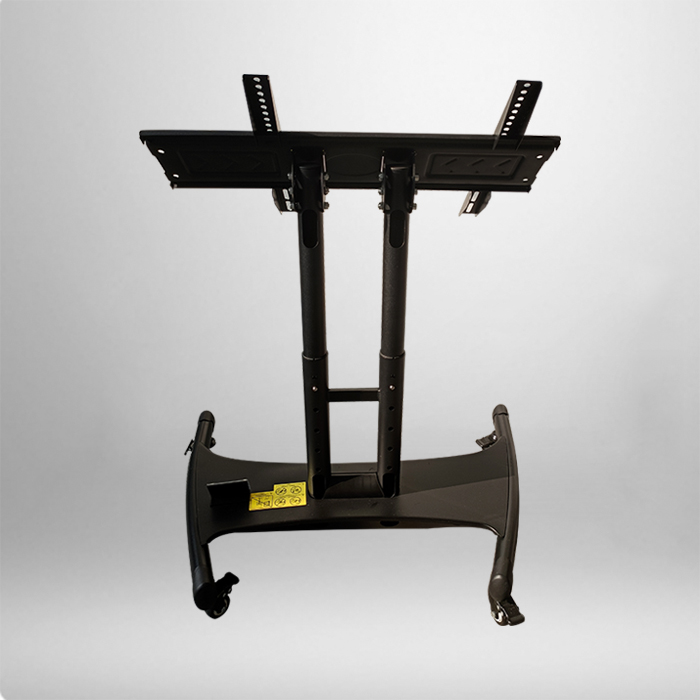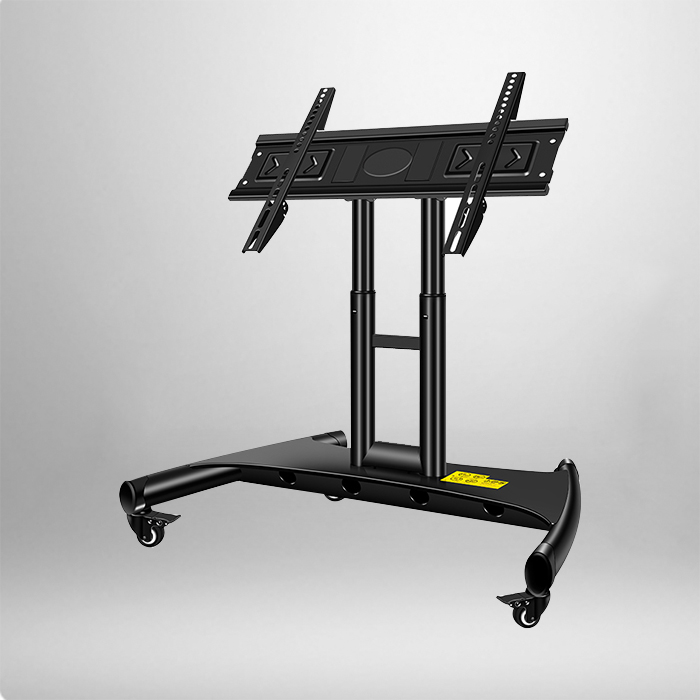
TV brackets are practical solutions for mounting televisions, offering both functional and aesthetic benefits in homes, offices, and commercial spaces. Unlike placing TVs on stands—which take up floor space and risk tipping—brackets secure TVs to walls or ceilings, optimizing room layout while enhancing viewing experiences. With various designs tailored to different needs, choosing the right TV bracket requires understanding key features and safety considerations.
A primary factor to consider when selecting a TV bracket is its type, as each serves distinct purposes. Fixed brackets are the most basic option, holding TVs flat against the wall. They are ideal for rooms where the viewing angle is fixed (such as bedrooms, where TVs are viewed from beds) and prioritize space-saving, as they leave minimal gap between the TV and wall. Tilt brackets, by contrast, allow the TV to be angled up or down—perfect for mounting TVs above fireplaces or high on walls, where adjusting the angle prevents glare and improves comfort. Full-motion brackets offer the greatest flexibility: they can swivel left/right, tilt, and extend from the wall, making them suitable for open-concept living rooms or offices where viewers may be seated in multiple positions.
Safety is non-negotiable when using TV brackets, and weight capacity matching is critical. Every TV bracket has a maximum weight it can support, which must exceed the weight of the TV. Ignoring this can lead to the bracket failing, resulting in TV damage or even injury. For example, a bracket rated for 50 pounds should not be used with a 60-pound TV—even if it fits the TV’s VESA pattern (the standard for mounting hole spacing on the back of TVs). Checking both the TV’s weight and VESA pattern (e.g., 200x200mm, 400x400mm) against the bracket’s specifications ensures a secure fit. Additionally, the wall material matters: drywall may require wall anchors or toggle bolts to hold the bracket, while concrete or brick walls need masonry drills and screws for stability.

Many users overlook installation details that impact both safety and performance. One common mistake is rushing the wall marking process: using a level to ensure the bracket is straight is essential—an uneven bracket will make the TV look lopsided and may cause stress on the mounting points. Another error is over-tightening screws: excessive force can strip the screw holes in the TV or bracket, weakening the connection. Following the manufacturer’s torque guidelines (often included in instructions) prevents this issue.
TV brackets also excel at space optimization and room styling. In small apartments, fixed brackets free up floor space that would otherwise be occupied by a TV stand, making rooms feel larger. In commercial settings like hotels or waiting areas, ceiling-mounted brackets keep TVs out of reach of guests, reducing the risk of damage while maintaining visibility. Additionally, brackets can be paired with cable management solutions (such as cord covers or in-wall cable channels) to hide unsightly wires, creating a cleaner, more polished look.
In summary, TV brackets offer versatility, safety, and space-saving benefits for various settings. By choosing the right type, matching weight capacity and VESA patterns, and following proper installation steps, users can enjoy a secure and optimized TV setup. Whether for a cozy bedroom or a busy office, the right TV bracket enhances both functionality and the overall appearance of a space.


